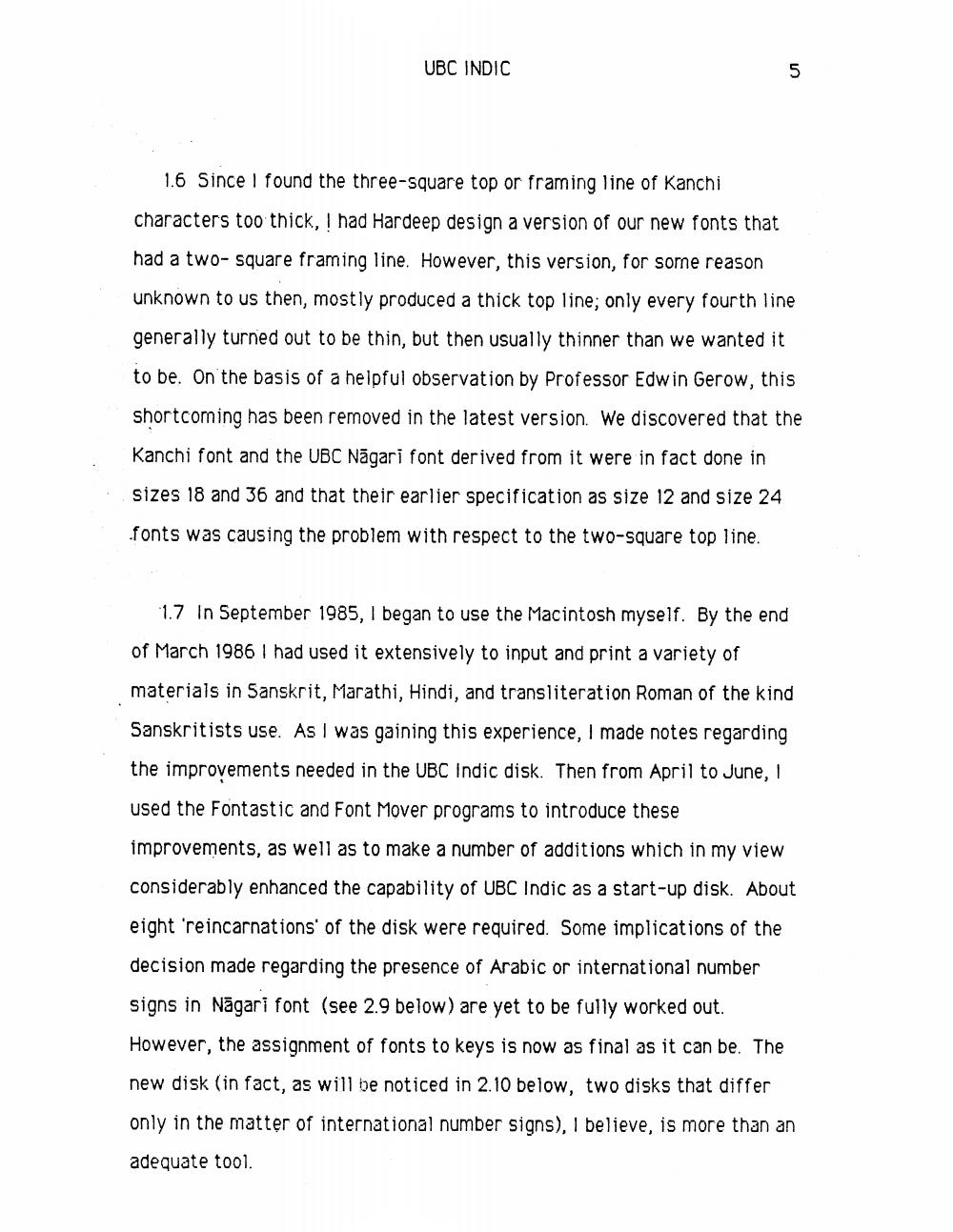Book Title: UBC indic Author(s): Ashok Aklujkar Publisher: Ashok Aklujkar View full book textPage 5
________________ UBC INDIC 5 1.6 Since I found the three-square top or framing line of Kanchi characters too thick, I had Hardeep design a version of our new fonts that had a two-square framing line. However, this version, for some reason unknown to us then, mostly produced a thick top line; only every fourth line generally turned out to be thin, but then usually thinner than we wanted it to be. On the basis of a helpful observation by Professor Edwin Gerow, this shortcoming has been removed in the latest version. We discovered that the Kanchi font and the UBC Nāgari font derived from it were in fact done in sizes 18 and 36 and that their earlier specification as size 12 and size 24 fonts was causing the problem with respect to the two-square top line. 1.7 In September 1985, I began to use the Macintosh myself. By the end of March 1986 I had used it extensively to input and print a variety of materials in Sanskrit, Marathi, Hindi, and transliteration Roman of the kind Sanskritists use. As I was gaining this experience, I made notes regarding the improvements needed in the UBC Indic disk. Then from April to June, used the Fontastic and Font Mover programs to introduce these improvements, as well as to make a number of additions which in my view considerably enhanced the capability of UBC Indic as a start-up disk. About eight 'reincarnations of the disk were required. Some implications of the decision made regarding the presence of Arabic or international number signs in Nāgari font (see 2.9 below) are yet to be fully worked out. However, the assignment of fonts to keys is now as final as it can be. The new disk (in fact, as will be noticed in 2.10 below, two disks that differ only in the matter of international number signs), I believe, is more than an adequate tool.Page Navigation
1 ... 3 4 5 6 7 8 9 10 11 12 13 14 15 16 17 18 19 20 21 22 23 24 25 26
